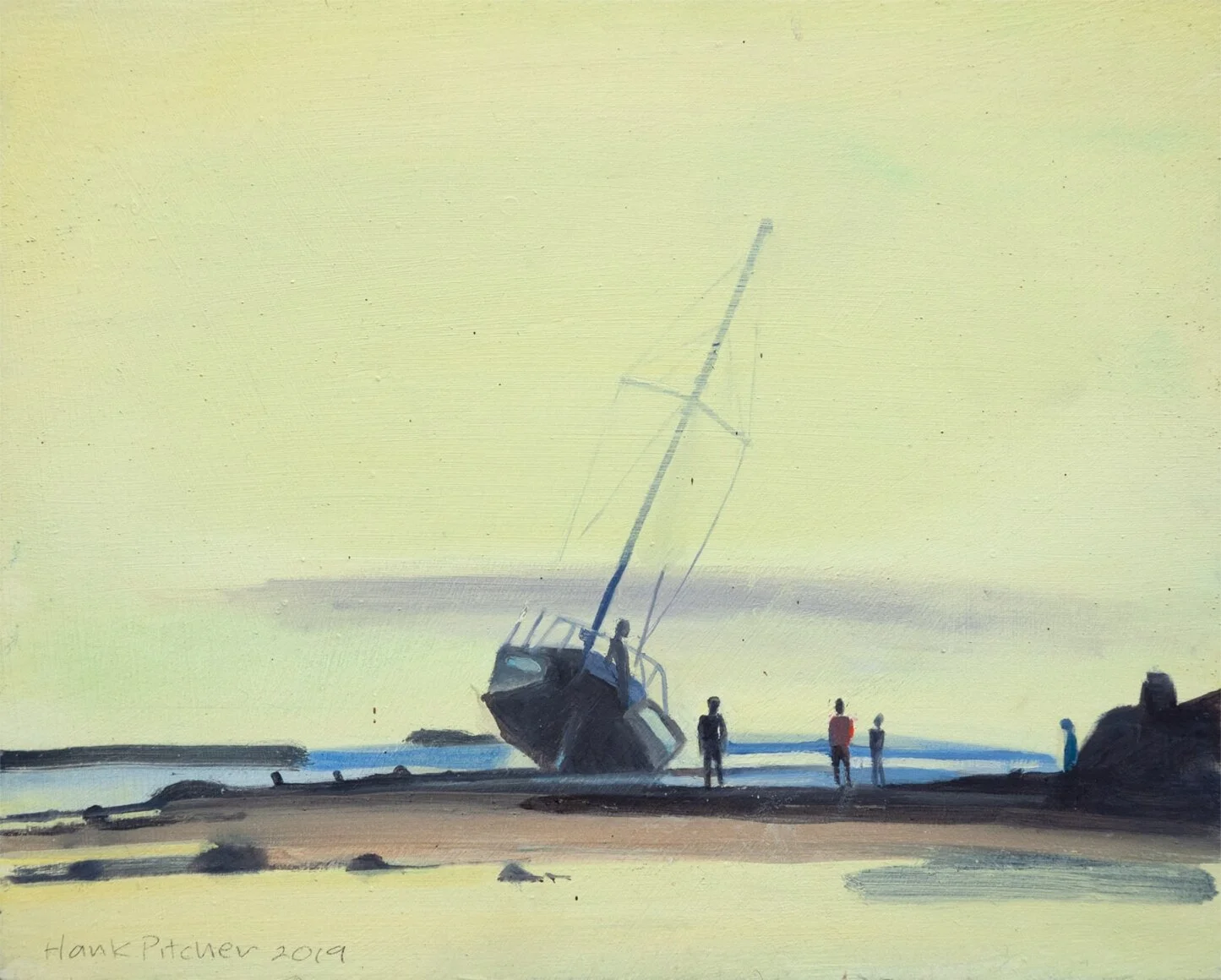Spatiality in Motion: American Abstract Art at Sullivan Goss Gallery
By Brenda Tan
Sullivan Goss’ current exhibition The Invention of American Abstract Art, curated by Jeremy Tessmer, explores how abstract art materialized and evolved within the works of Werner Drewes (1899-1985), Oskar Fischinger (1900-1967), and Sidney Gordin (1918-1996) after they moved to the United States. During the twentieth century, discoveries in quantum theory, relativity, and cosmic evolution largely shaped artistic attempts to conceptualize the human condition. Although it is widely attributed to its European inception, abstract art sustained formal developments when it spread to the United States in the later half of the twentieth century.
The artists’ preoccupation with mapping out the human experience in a dynamic and complex world follows them to their death. Drewes’ Planetary Orbit, 1984, Ice Age, 1983, and Fischinger’s Orbits in Motion, 1965 are displayed together on the left wall of the exhibition in one cluster. These works were created only a few years prior to the end of their respective authors’ lives. Therefore, they can be read as the artists’ contemplation of their own mortality, attempts to cosmically triangulate their own transience within the vastness of the infinite. Whereas Drewes characteristically condenses history in Ice Age and the perennial circularity of planetary movement in Planetary Orbit into his own conception of deep-time and space, Fischinger’s work questions his own infinitesimal significance within the cosmic grandiosity of space itself.
Oskar Fischinger, Orbits in Motion, c. 1965.
Werner Drewes, Ice Age, 1983.
Due to his Bauhaus education, Werner Drewes’ works are perhaps the most recognizably reminiscent of European abstraction with its geometric dynamism and cubist arrangement of perspective. His works attempt to compress sequential order into a panoramic profusion of multiplicity. Aquatic Ballet, 1979, compresses the forms of passing ships and distant gestures of emerging shapes of land into a single visual plane. The name implicates a sort of dance that comes to play as these ships reach their destinations and the Earth’s shifting tectonic plates alter the landscape over time. Possibilities and deep-time are encapsulated within the infinite backdrop of horizon and sea.
Brilliant Light, 1978, summons a rendition of a room from a blueprint-layout perspective. The gray squares on the left side of the painting might reference a television set. The four orange triangles protruding out the screen into space are perhaps an attempt to depict the sound and light waves emanating from the screen. Drewes’s attempt to represent light in tangible and coherent forms is complicated by the idea that light is what allows the visual field itself to exist, corroborating the painting’s title.
Werner Drewes, Brilliant Light, 1978.
While Drewes flattened out sequential order into a compression of iterations, Oskar Fischinger opted for motion-oriented capacity with an attentiveness to the static nature of the two-dimensional surface. His method was informed by his occupation of creating films that synthesized the movement of abstract shapes with music, making him one of the pioneers of the music video. This led to his employment by Paramount in 1936, for which he moved to Los Angeles.
Oskar Fischinger, Flag 1, 1959.
In the United States, Fischinger immersed himself in painting. Underlying modernism was the question of whether flat images could truly occupy deep-space within the pictorial landscape—a question Fischinger approaches by incorporating movement and flow within his paintings. Flag 1, 1959, explores the process through which meaning on a canvas is constructed through the sequential ordering of spatial components, the use of color as a means to categorize, and movement as a progression towards coherency. Jeremy Tessmer, the exhibition curator, similarly imagines Motion Painting, 1948, as an evolution from the shapeless origins of human existence to the progressive development of formal order in which the image expands to the edges of the surface. Fischinger’s works create movement with the deliberate placement of spatial components.
Sidney Gordin’s Film Painting, 1975, similarly engages with the concept of movement on a two-dimensional surface. The piece is adapted from his 17-minute film of bright yellow and red abstract shapes changing and taking form against a black backdrop. His early drawings from the 1940s document his experimentation with spatial order and protrusion into space. These elements of his work took on a more transcendent tone when he began doing sculpture, as evident in 8-17-58, 1958. His turn to multimedia and sculpture work led to his artistic breakthrough. His work was featured in the Metropolitan Museum of Art’s American sculpture exhibition in 1951.
Furthermore, the three artists were connected in various ways. Gordin was a student of Drewes in Brooklyn and both Drewes and Fischinger were born in Germany. Through the exhibition, we can trace a matrix of aesthetic interrelations between the three European abstract artists whose migration to America indelibly changed its artistic cultural landscape.
Sidney Gordin, Constructivist Collage #9, 1944
Sidney Gordin, #157, c. 1943
Drewes, Fischinger and Gordin: The Invention of American Abstract Art is on view from October 30 to December 28 at Sullivan Goss – An American Gallery, Santa Barbara.
Cover Image: Sidney Gordin, Film Painting, c. 1975.





